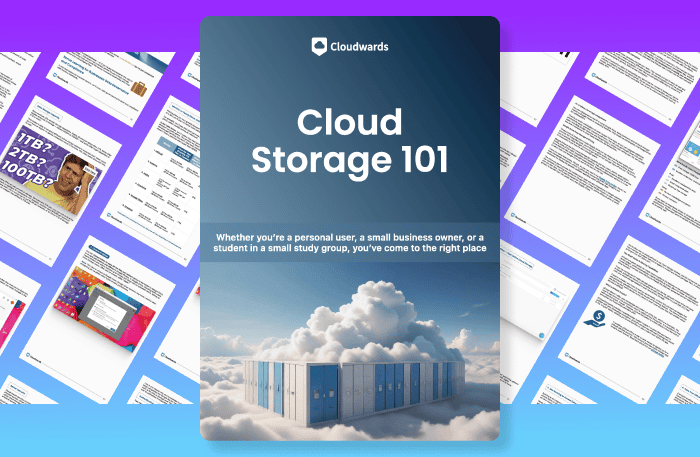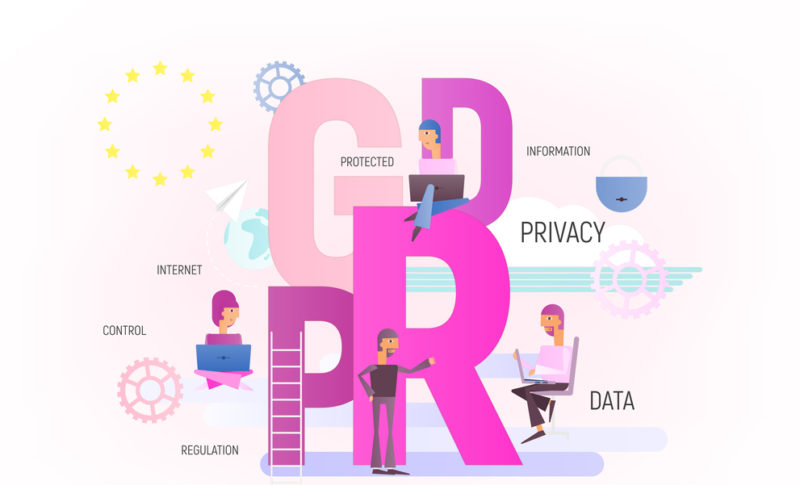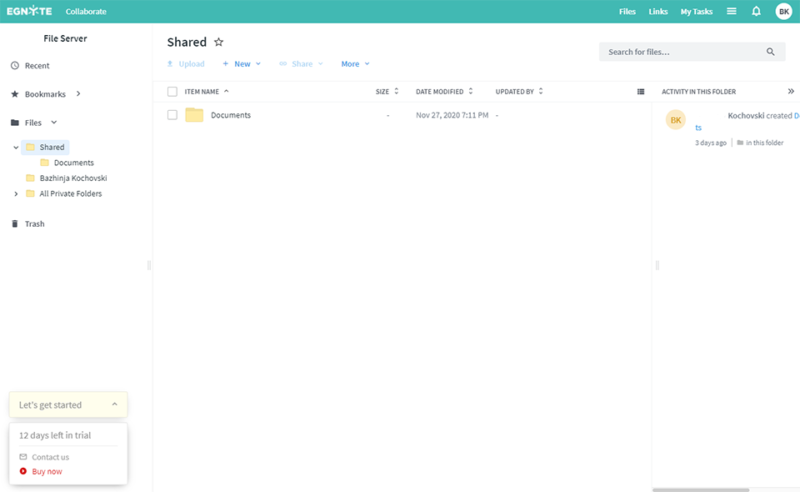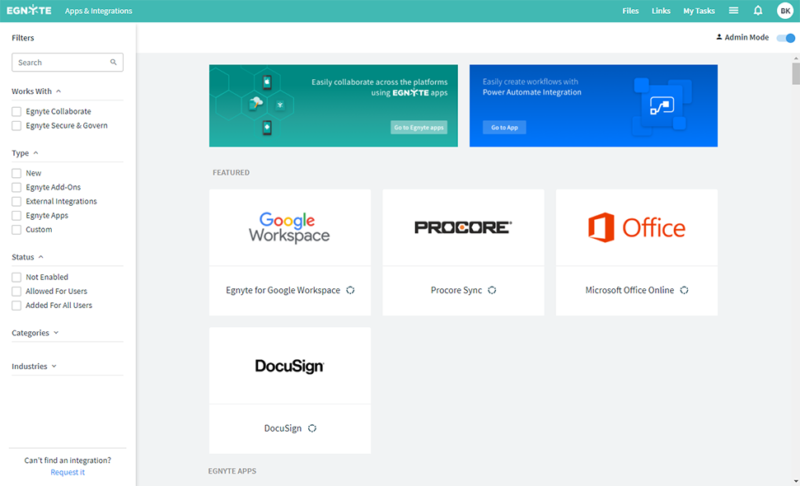What Is Data Governance: Take Control of Your Data in 2025
If you want to take control over your business' data, you need to know the answer to the question: "what is data governance?" Yes, it's a convoluted topic, but we're here to help you figure it all out, from its benefits to easy-to-understand examples of data governance.
Data governance is one of the most important challenges faced by modern businesses today. However, it is a broad and convoluted topic that can easily get confusing even for seasoned IT experts. This article aims to provide a definitive answer to the question: what is data governance?
Key Takeaways:
- Data governance is a necessary methodology that allows organizations to take control over their data by imposing rigorous standards, procedures and regulations concerning data ownership and usage.
- The primary goals of data governance are to achieve better regulatory compliance, higher data quality that is more suited for data analytics, and to help ensure first-rate business decisions.
- The benefits of data governance include reduced costs, greater efficiency, increased security, and transparent roles and responsibilities.
In this article, we’ll look at the benefits of utilizing a data governance framework and give examples of best practices and data governance tools for enterprises. These will help to dispel some common misconceptions about data governance and explain why every enterprise needs to have a data governance initiative in place.
What Is Data Governance: A Simple Definition
The Data Governance Institute defines data governance as, to paraphrase it: a system where decisions and roles are executed according to predefined models. These models further distinguish who can handle that data, when, in which ways and using what methods.
To give a simpler definition: data governance is a segment of data management concerned with establishing a set of policies and procedures for managing and protecting data assets within an organization. Data governance programs include employees, processes and technology systems. They help to ensure data quality, better business intelligence and decision making.
10,000+ Trust Our Free Cloud Storage Tips. Join Today!

- Demystify cloud storage terminology and key concepts in plain language
- Discover easy-to-implement techniques to securely backup and sync your data across devices
- Learn money-saving strategies to optimize your cloud storage costs and usage
Real Examples of Data Governance
Here are a few examples of what to use data governance for and how it can benefit every enterprise.
1. Regulations
Government and industry regulations are one of the most obvious examples why data governance initiatives are mandatory. To see this in action, look no further than the General Data Protection Regulation (GDPR). Since all enterprises that do business in the EU (meaning, the majority of them) have to adhere to these rules, GDPR compliance is a necessity.

Because data retention and data use are such integral aspects of GDPR, data governance is a mandated part of this EU regulation. Failure to comply with GDPR and other regulations, such as the Health Insurance Portability and Accountability Act (HIPAA), can lead to huge fines and other penalties.
2. Big Data & Analytics
Enterprises routinely deal with data sets that exceed petabytes in size. Since these can be too big or too complex for traditional software to process in an acceptable time frame, predictive analytics are often used to extract value from these big data assets. Managing data that takes up so much space is made easier with data governance and enterprise file sync and sharing.

Data sets are growing at a rapid pace, thanks to sources of information such as the internet of things devices, and data governance is necessary for data consistency, accuracy, completeness and accessibility. Corporate data and its analytics provides more actionable and valuable insights that lead to superior business outcomes.
3. Clearly Defined Roles & Responsibilities
Data governance aims to eliminate uncertainties regarding whose responsibility it is to manage data and make data-related decisions, plans and actions. Data governance programs involve rigorously established roles and rules that dictate the hierarchies of decision making and management of data.

What Data Governance Is Not
We’ve given examples of what falls under the data governance category, but since this is such a complex topic, it is equally important to define what data governance doesn’t encompass. By clearly differentiating between what is data governance and what isn’t, you will be able to set up an effective data governance strategy and also choose the right tools for implementing it.
1. Data Governance Isn’t Purely IT-Driven
Rather, it is a company-wide approach to implementing processes that help with data protection, data security, data standards, data integration and using metadata management. As such, it is a consistent methodology that applies to all data across the enterprise, not just IT-related data assets.
2. Data Governance Is Not About Who Owns the Data
Data governance is about defining and clarifying who controls the data value itself through strictly enforced roles, such as data owners, data stewards and data custodians. This also reduces silo-mentality conflicts between departments because data governance provides cross-functional data.
3. Data Governance Isn’t a Quick Project
You can’t execute a data governance strategy from beginning to end in a predefined time frame. It is a continuous, iterative procedure in which there is a slow implementation of processes with care, one by one. Business enterprises that have had the most success instituting data governance programs have done so incrementally and based on feedback.
4. Data Governance Is Not Inefficient Bureaucracy & Needless Red-Tape Procedures
When implemented incorrectly, excessive control can lead to stifled decision making. However, real data governance is centered around creating a healthy and efficient environment where decisions reflect established roles and guidelines.
Why Is Data Governance Important?
To start with, one of the chief reasons why adopting a data governance program is so important is that data assets can be inconsistent across different systems and departments in the same company. An example would be when the same file types reflect different naming conventions in different business units of the enterprise.
That can lead to all kinds of issues, including slower data integration, metadata management problems and numerous data errors in analytics software. These data errors might not even get discovered and resolved in an acceptable amount of time, leading to further complications down the line.
To avoid this, every enterprise needs to adopt universal standards when it comes to data formats, definitions, data policies and management of data. This way, there is a comprehensive understanding of corporate data, as well as common doubts and mistakes that can arise when universal standards are not apparent or are severely reduced.
The Importance of Data Quality and Data Analytics
Less data sprawl and cleaner data lead to improved data quality. That in itself leads to better data analytics and consequently to the ability to make improved decisions relating to business ventures and corporate functioning. Likewise, superior data analytics make it easier to identify and fix errors in data assets.
Speaking of data analytics, since the accuracy of these processes will improve, then finer and more ordered data allows a boost to many foundational blocks of business processes across the board. Some of these advantages include better customer experience and customer satisfaction, increased revenue and reduced costs.
Higher data accuracy also results in time-saving measures. When data assets are managed the right way — which is one of the cornerstones of data governance and why implementing data quality best practices is worth doing — you spend less time cleaning up after mistakes and errors, and more time proactively implementing agreed-upon processes. In turn, this provides an improved return on investment performance measure.
Data quality directly impacts better decision making, as well. With data refined and actionable, this gives the decision makers responsible for running the company a higher degree of confidence in choosing the correct course of action. Naturally, this is also associated with lower risks since this mitigates liabilities more easily.
Employee productivity also increases. When employees do not have to waste time dealing with unknown variables concerning data that can — and should be — defined right from the start, they can instead focus on their own tasks and work-related goals. Data governance provides a structure that is backed up by rigorous documentation, which employees can always check.
Goals of Data Governance
The exact goals of data governance can depend on the data governance framework used, but there are some key goals that are universal in all data governance programs. These key goals are: better regulatory compliance, improved data quality, reduced master data management expenses and the creation and monitoring of uniform procedures and processes, which are enforced by data owners and data stewards.
Data governance is mandated by numerous regulatory compliance acts, and having a data governance strategy in place will prevent your organization from incurring hefty fines. Because data governance requires thorough documentation of data processes and stored data assets, this also helps with auditing procedures.
Another goal of data governance is to assign data ownership rules and responsibilities to the appropriate entities. Role naming can vary, but the core ones are, from top to bottom:
- Data Governance Council — The governing body in charge of the overall data governance program and approval of data policies and standards
- Data Governance Board — Makes the decisions that require resources for something to be changed or implemented
- Data Manager — Supervises and organizes the data systems in an organization
- Data Owner — Decides who gets access to data assets
- Data Steward — Ensures that data and metadata are compliant with established policies, processes and guidelines
- Data User — Employees that use and create data as part of their jobs
Master data management is closely tied to data governance. Master data is the data that pertains to business entities and business transactions. It typically includes categories, such as parties (customers, suppliers, etc.), products, financial structures and locations. Needless to say, master data management is extremely important to the running of every business.
Data Governance Best Practices
With so many things it entails, getting a data governance program up and running can seem very daunting. We’ve covered the various reasons why every organization should adopt a strong data governance strategy, but here are some useful tips to help you ease into your data governance framework.
1. Never try to launch a data governance program without full support from upper management
Data governance heavily relies on having everyone on board and on keeping the channels of communication open at all times. All participants have to be truthful when discussing the potential issues and challenges that can arise.
2. Do not attempt to implement all the data governance initiatives at once
Start small, gather feedback and adjust accordingly. Data governance isn’t a race; it is a continuous process made up of many smaller initiatives where constant iterating is the key to success. Set clear expectations and targets with achievable goals.
3. Research examples of good data governance
Countless organizations have implemented data governance methodology, and it would be a waste not to learn from their past experiences. There are many use cases, templates, literature and successful models of data governance implementations in action to be found online.
Reading up on their testimonials could help you avoid some common pitfalls.
4. Establish clear rules concerning documentation practices.
Refer to these whenever in doubt concerning any element or procedure. Identify and assign roles. Foster communication between members of all business units — data governance depends on teamwork and transparency. Provide stakeholders with meaningful and business-relevant results.
Benefits of Data Governance
- Better business decision making due to precise corporate data that is consistent and uniform on all levels of the organization.
- Central control standards optimize the costs of other data management processes.
- Increased compliance with government and industry regulations.
- Makes IT processes more efficient, agile and easier to scale because of defined rules for changing procedures and data.
- More efficient synergies through reused data and processes.
- Documentation for data processes results in higher data quality.
- Internal and external data are more secure because of tighter privacy policies monitoring and enforcing.
- Transparent roles and responsibilities.
Cloud Data Governance
The importance of cloud computing cannot be overstated. Cloud computing offers accessibility, it gives us the ability to interact with our favorite apps no matter where we are, and it provides scalable resources for organizations of all types and sizes. With so much data stored on the cloud, data governance is more important than ever before, especially for cloud security.
Like with any other complex business process, migrating to the cloud comes with its own set of challenges. We’ll go over some of these and point out how data governance is necessary to mitigate the worst-case scenarios of cloud migration and how important it is to have a comprehensive cloud data governance plan in place.
Many businesses have serious reservations concerning the security of cloud services. Because of these nagging doubts, they prefer to host their sensitive and private data on local servers instead. Data governance encompasses data privacy and data security, making data breaches less likely to occur.
Data loss is another common concern. Again, since data governance applies better methodologies for data standards, including data stewardship practices, internal and external data is managed better. That results in a more successful data migration without data loss and similar data-related errors.
Of course, migrating to the cloud is all but necessary. If you are still unsure about how much storage space you will need, you can look into elastic cloud storage. Using the best practices of data governance, your migration to a cloud-based environment is much more likely to be hassle-free.
Data Governance Tools
Just like how Googling what is data governance will give you thousands of complicated, mutually exclusive definitions. So will a search for data governance tools get you results that have very little to do with what data governance is about and even less with helping you implement a data governance framework.
A good data governance tool should help you consolidate your internal and external data. Furthermore, it should aid you in enforcing your data governance policies so you can achieve better data quality, compliance and security. Metadata management, file versioning, setting user roles and good security are some other features we want to see in our data governance tools.
Egnyte — The Best Tool For Data Governance
Our favorite tool for data governance is Egnyte, which tops our list of the best business cloud storage services. It’s a good choice for both small organizations and large corporations, offering a lot of useful features that will benefit business owners who want to implement a data governance program.
Besides a 15-day free trial — which readers should take full advantage of to try out the app — Egnyte comes with three pricing tiers: Team, Business and Enterprise. Their names are a clear giveaway to which team sizes they are for, with the Enterprise plan best suited for large-scale data governance.

Egnyte handles file sharing really well, with near-instantaneous syncing across all devices and the desktop and mobile version of the app. You can assign roles to people according to the levels of access you wish to grant them. There is also the option to have several people edit the documents in real time, using the Microsoft Office and Google Workspace add-ons.
Besides sharing and file syncing, Egnyte also has some task management capabilities. Although it doesn’t come close to the likes of Asana and other dedicated project management tools, the option to commit tasks and deadlines to files inside the app is a very welcome management feature.

Egnyte can integrate with over 150 apps. In fact, when you integrate it with third-party apps such as Zoom, Trello or AutoCAD, you can access all of these through Egnyte, which then becomes a sort of virtual office space. All of these integrated apps will then use Egnyte’s storage space to store their content — similarly to how Google’s apps use Google Drive.
One of the best things about Egnyte is how user friendly it is. The user interface is distinct and simple without being plain and off-putting, with rich settings that allow you to customize it to your exact preferences. Overall, Egnyte is an excellent tool for data governance and one of the best enterprise file sync and share (EFSS) providers.
Final Thoughts
We hope that this article has provided adequate answers to questions concerning data governance, how it functions and what its tactile benefits are. Data governance is a very complex and extensive segment of IT. That said, the benefits clearly outweigh any doubts business owners could have about implementing it.
When implemented correctly, data governance results in data assets that are less cluttered, processes and procedures that leave no doubt about who’s in charge of what, and superior data analytics that can cope with the demands of big data and data silos in every point and business unit across an organization.
What do you think about data governance? Have you already implemented a data governance framework in your business? What are your data governance experiences? Which data governance tools do you use in your company? Tell us in the comments. As always, thank you for reading.
FAQ
An example of data governance is when an organization adopts a data governance initiative in order to: define data models, distribute roles and responsibilities regarding the use of data, retention of old and new data — particularly sensitive data — create data standards, implement protection and establish security in the entire enterprise.
Data governance is an applied methodology that ensures data consistency through a set of policies, procedures, roles and standards for managing and protecting data assets across all business units of an organization.
When properly implemented, data governance ensures that data is accessible, usable, secure and protected. This is especially important for businesses since corporations often deal in large quantities of big data, and data governance allows for easier data analytics. Consequently, data analytics provides superior business decisions and outcomes.

